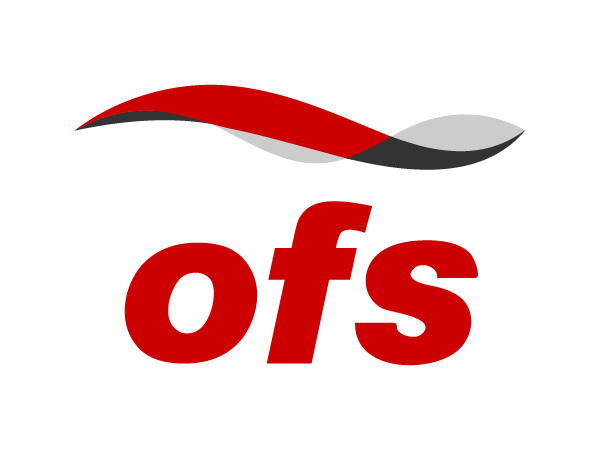Supporting high-capacity, high-speed communication between data centers in the 6G era
November 30, 2023
KDDI Corporation (headquartered in Chiyoda-ku, Tokyo; President and CEO: Makoto Takahashi, hereinafter, “KDDI”), KDDI Research, Inc. (headquartered in Fujimino-shi, Saitama; President: Hajime Nakamura, hereinafter, “KDDI Research”), Sumitomo Electric Industries, Ltd. (headquartered in Osaka City, Osaka; President: Osamu Inoue, hereinafter “Sumitomo Electric”), Furukawa Electric Co., Ltd. (headquartered in Chiyoda-ku, Tokyo; President: Hideya Moridaira, hereinafter “Furukawa Electric”), and OFS Laboratories, LLC (headquartered in United States; hereinafter “OFS”) have conducted successful experiments on ultrawideband optical fiber transmission with a transmission bandwidth of 115.2 THz (approximately 24 times wider than conventional C-band), the world’s largest (transmission capacity: 484 Tbps, transmission distance: 31 km) (Note 1) in optical fiber transmission experiments using standard optical fiber diameter. This was done by combining uncoupled 12-core optical fiber that has 12 independent cores densely arranged in a 250-μm coating (Note 2), the same size as a standard optical fiber, and a broadband O-band optical fiber amplifier (BDFA).
In the 6G era, it is expected that far more and diverse data will flow through networks than at present due to the spread of IoT (Internet of Things) devices and mobility services, and it is essential to further expand the capacity of optical fiber communication to support networks. The success this time is in technology for supporting high-capacity, high-speed communication between data centers in the 6G era. Furthermore, the same transmission capacity can be secured with fewer fiber cores since the transmission capacity per optical fiber can be greatly expanded, and this technology is expected to enable the use of ordinary conduits and facilities with less space occupied.

Background: The capacity of optical fiber communication needs to be further expanded to support networks in the 6G era. Transmission capacity per optical fiber can generally be increased by using wavelength division multiplexing, in which the wavelength of light is slightly changed for multiplexed transmission. Until now, KDDI Research, Sumitomo Electric, and Furukawa Electric have been working toward practical application of multi-core optical fibers, which have multiple cores in a single optical fiber (Note 4). In March 2023, KDDI Research, Furukawa Electric, and OFS conducted successful O-band coherent dense wavelength division multiplexing (DWDM) transmission (Note 5) experiments to utilize the O-band, which has approximately twice the transmission bandwidth of the C- and L-bands (Note 6). Furthermore, in March 2023, Sumitomo Electric presented a high-density uncoupled 12-core optical fiber with a coating diameter of 250 μm, the same diameter of standard optical fibers, making it ideal for creating high-density optical cables (Note 7).
Results at time: KDDI, KDDI Research, Sumitomo Electric, Furukawa Electric, and OFS have succeeded in experiments in high-capacity transmission with a transmission bandwidth of 115.2 THz by using the high-density uncoupled 12-core optical fiber with a coating diameter of 250 μm and combining it with O-band coherent DWDM transmission technology, which significantly reduces the effects of inter-core crosstalk. Please refer to the appendix for details.
[Appendix] Roles of individual companies
- KDDI and KDDI Research

- Furukawa Electric and OFS

WDM: Wavelength Division Multiplexer, PDM: Polarization Division Multiplexing
- Sumitomo Electric

The O-band has an advantage in that it can reduce the signal processing load to compensate for wavelength dispersion (Note 8) because the effect of wavelength dispersion is smaller than that of the C-band, but it has a drawback that the quality of the optical signal is easily degraded due to nonlinear optical effects (Note 9). Therefore, the O-band has been considered unsuitable for increasing the capacity of optical fiber communication systems. KDDI Research has developed O-band coherent DWDM transmission technology that enables high-capacity transmission by suppressing nonlinear optical effects through optimization of the transmission power of optical signals. Wavelength division multiplexing of more optical signals is effective in increasing the capacity of optical fiber communication, but this requires optical fiber amplifiers that can amplify a broader wavelength band. The BDFA developed by Furukawa Electric and OFS can amplify optical signals over the entire O-band, which is broader than the C-band and L-band combined. This experiment showed that an ultrawideband comparable to the C+L band can be achieved by amplifying coherent DWDM signals over 9.6 THz in the O-band. Furthermore, by applying multi-core optical fiber, in which multiple cores that are paths for optical signals are arranged in a single optical fiber, the transmission capacity per optical fiber can be expanded by the number of cores. Sumitomo Electric has focused on the fact that optical signals in the O-band are more strongly confined by the core than in the C-band, and it has developed an uncoupled 12-core optical fiber with 12 independent cores densely clustered within the standard optical fiber outer diameter of 250 μm. It was demonstrated that, by combining these three technologies, the total available bandwidth per optical fiber can be extended to 115.2 THz, and a 484 Tbps high-capacity transmission experiment was successfully conducted as one example. This is the world’s largest bandwidth and transmission capacity in a demonstration experiment for a single wavelength band, not a combination of multiple wavelength bands.
Future outlook: In the future, research and development will continue for transceivers, optical fiber amplifiers, and digital signal processing algorithms toward the practical application of ultrawideband O-band coherent DWDM transmission systems, with an aim of further increasing transmission capacity between data centers. Part of this research and development is the result of Project JPNP20017 commissioned by the New Energy and Industrial Technology Development Organization (NEDO), a national research and development agency.
(Note 1)
Surveyed by KDDI Research on October 20, 2023
(Note 2)
Multi-core optical fiber with standard coating diameter that can use existing optical cables.
(Note 3)
Post-deadline paper: A paper accepted after the general paper submission deadline (post-deadline). Paper selection is conducted during the conference period, and only highly rated research results are given the opportunity to be reported.
(Note 4)
Press release on March 28, 2022 (in Japanese only)
Development and Demonstration of World-leading Technologies that Increase Submarine Optical Cable Capacity with Multicore Fiber.
(Note 5)
Coherent dense wavelength division multiplexing (DWDM) transmission: Coherent transmission is a method of transmitting a larger volume of data than conventional intensity modulation-direct detection technology by using the properties of light as waves as well as the light intensity. Dense wavelength division multiplexing (DWDM) is a method of densely multiplexing wavelengths in WDM (Wavelength Division Multiplexing) technology, which increases the transmission density of optical fibers.
(Note 6)
Press release on May 18, 2023
Utilization of ultrawide bands to increase the capacity of optical fiber communication: The world’s first successful O-band coherent high-density wavelength division multiplexing transmission experiment.
(Note 7)
T. Hayashi, A. Inoue, Y. Suzuki, Y. Norisugi, K. Kawamoto, J. Takano, T. Nagashima, T. Hirama, K. Takeda, Y. Shimoda, and F. Sato, “Ultra-High-Density Microduct Cable with Uncoupled 12-Core Fibers with Standard 250-µm Coating,” in Optical Fiber Communication Conference (OFC) 2023, Technical Digest Series (Optica Publishing Group, 2023), paper Tu2C.2.
(Note 8)
Wavelength dispersion: A phenomenon in which light propagates at different speeds at different wavelengths. Since optical signals contain slightly different wavelength components, the longer the propagation distance, the more the optical signal distorts due to wavelength dispersion.
(Note 9) Nonlinear optical effect: A phenomenon in which an optical signal interferes with a component of its own optical signal or a component of another optical signal multiplexed to a different wavelength, causing distortion of the optical signal.
Inquiries:
KDDI Research, Inc. Public Relations Group


